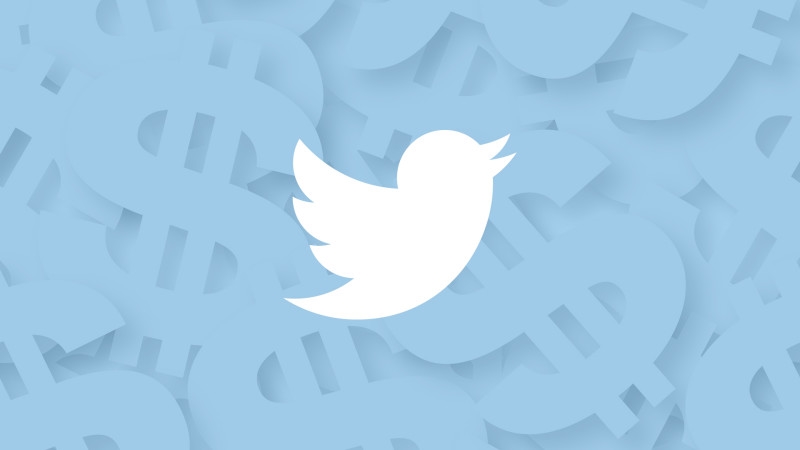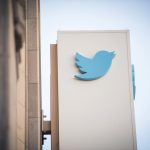Twitter’s business is finally growing again, but its audience isn’t. Maybe that’s OK.
What marketers need to know from Twitter’s Q4 2017 earnings.

Twitter’s business is like a seesaw. One side goes up and, as if by design, the other side goes down. In the fourth quarter of 2017, Twitter’s revenue declines finally went away, yet now its audience growth struggles have returned.
But are things actually looking up for Twitter?
A more profitable business
First, things are definitely looking up for Twitter’s business. In addition to turning a profit for the first time ever — a $91 million one at that — the company recorded year-over-year total revenue growth and advertising revenue growth for the first time since Q4 2016 and Q3 2016, respectively. Twitter’s total revenue increased by 2 percent year over year to $731.6 million in Q4, and its advertising revenue inched up by 1 percent year over year to $644.3 million. Additionally, revenue from ads served on Twitter’s own site and apps reversed three consecutive quarters of year-over-year declines, increasing by 7 percent year over year to $593 million.
However, there remain some issues with how Twitter makes its money. For example, Twitter still has more ads to sell than demand to buy them, its CFO Ned Segal said during the company’s earnings call on Thursday. And the company’s ad volume continues to seesaw with its ad pricing.
For each quarter since Q3 2015, Twitter has improved ad engagement but revenue per engagement — video views, retweets, likes and link clicks — has declined. In Q4 2017, the number of times people engaged with ads increased by 75 percent year over year, but the average amount of money advertisers paid per engagement decreased by 42 percent year over year.
However, the dynamic of ever-shrinking average cost per engagement and ever-increasing number of engagements — combined with an unspecified increase in click-through rates — is a good thing, Segal argued, “When advertisers are getting lower costs and higher click-through rates and more engagements due to better ad formats, higher relevance and more audience and engagement, they get a better [return on investment] on Twitter.”
Segal added that Twitter’s average cost-per-thousand-impressions (CPM) is “healthy,” and he expects that to continue, though he didn’t provide any numbers. If advertisers continue to see that they get more bang for fewer bucks on Twitter, the profitability of their ad investments in Twitter may lead them to allot more dollars to the platform, contributing to the stabilization that some ad buyers have already seen in Twitter’s business, despite the loss of its revenue boss.
Twitter’s off-platform ad business continued to be a sore spot in Q4. But that may change. Earlier this year, Twitter shut down the TellApart retargeting business it bought for $479 million in April 2015. Given that TellApart contributed $40 million in revenue in Q4 2016 and $0 in Q4 2017 and that Twitter’s off-platform ad revenue declined by $34 million in Q4 2017 compared to Q4 2016, the non-TellApart piece of its off-platform ad business may have actually grown in the quarter.
A more monetizable audience
Yes, Twitter’s audience growth struggles returned in Q4 2017. But the reason for its lack of growth may not signal that Twitter is losing its grip on users but letting loose the users that it can’t sell to advertisers (or at least shouldn’t sell to advertisers).
The size of Twitter’s global monthly audience did not grow in Q4 compared to the previous quarter, and its US monthly audience actually shrank from the previous period. Twitter’s worldwide monthly active user base stayed flat at 330 million people, and its US monthly active user base contracted by 2 percent from the previous quarter to a total of 68 million people.
Twitter blamed the lack of monthly audience growth, in part, on “the change to Safari’s third-party app integration,” according to the company’s letter to shareholders. During Thursday’s earnings call, Segal said the change resulted in 1 million fewer monthly users in the US and 1 million fewer outside of the US.
Twitter did not specify what change Apple had made to its web browser that kneecapped audience growth. However, the company is likely referring to Apple removing the “shared links” feature from Safari that pulled the links shared to a person’s Twitter feed into a separate list that could be accessed within its web browser. When people checked that list, they were technically checking Twitter and counted as an active Twitter user. Three years ago, a similar change cost Twitter millions of monthly users. At the time, Apple stopped automatically updating the list in the background, requiring people to open the “shared links” tab to refresh the list and become a Twitter user, though not a Twitter user that the company could serve with ads.
Twitter also cited seasonality and its efforts to eliminate false, malicious and spammy bot accounts for the lack of audience growth.
Translation: Twitter may not have many, or in the US, any, more users, but it has more real users, aka the kind that it can legitimately sell to advertisers.
And Twitter appears to continue to convince more of those actual users to become more regular users. For the fifth straight quarter, the size of Twitter’s daily audience increased by a double-digit percentage, up 12 percent year over year. Twitter still refuses to disclose the its daily active users (DAU), so it’s difficult to interpret the full significance of that daily audience growth.
“Giving you the percentage growth for DAU [daily active users] gives you a sense for our trajectory in driving usage of Twitter as a daily utility,” Segal said.
In other words, Twitter appears to be cutting the fat in both its revenue and audience, making for a leaner business and setting the foundation for a potentially more stable kind of growth going forward.
Marketing Land – Internet Marketing News, Strategies & Tips
(25)














